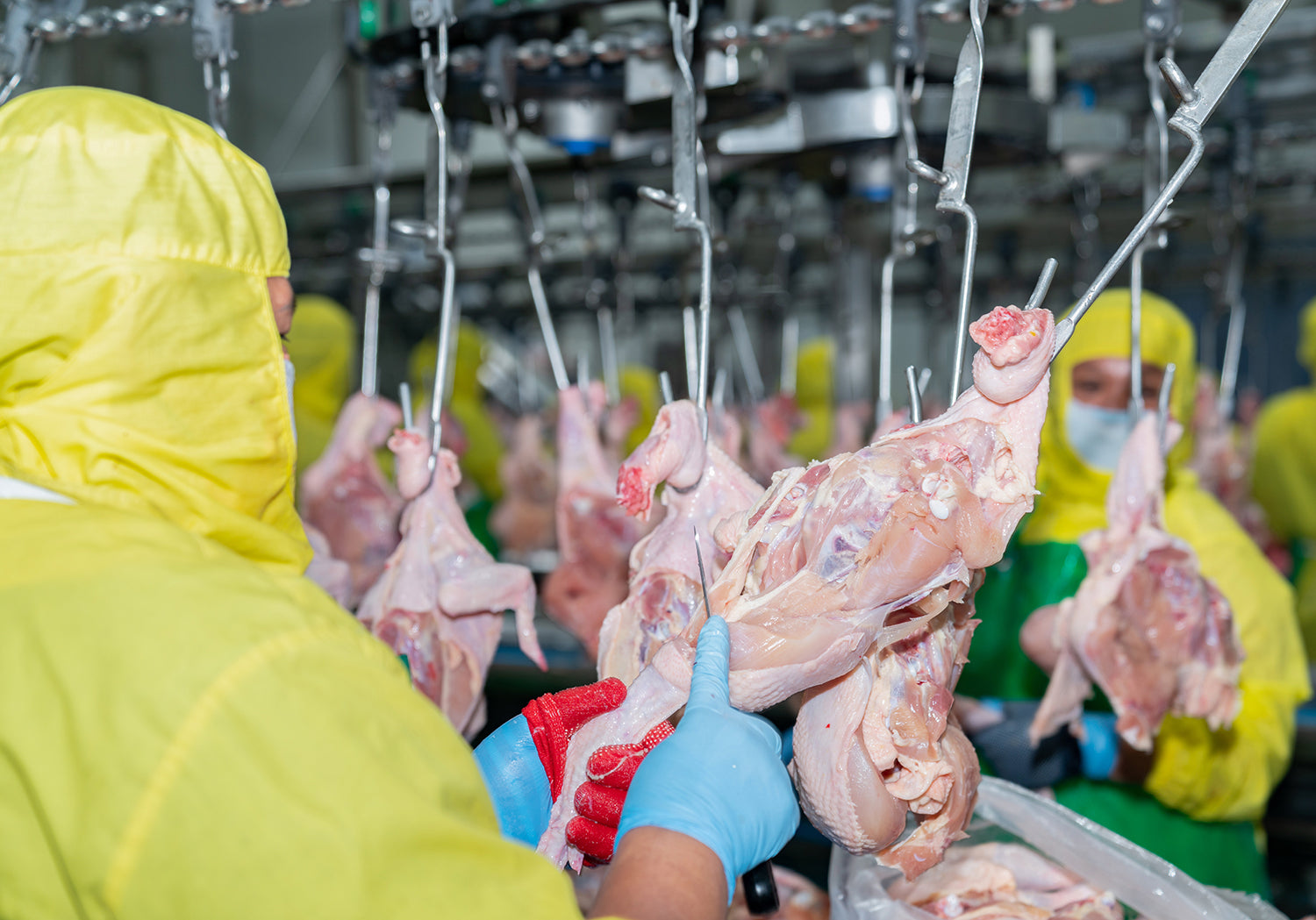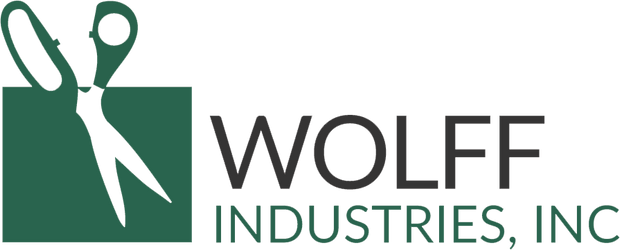
How Much Do Professional Poultry Knives Typically Cost?
Industrial poultry processing plants require specialized knives to efficiently portion birds on a large scale. A quality knife is essential for workers handling hundreds or thousands of birds per shift.
But with so many options marketed for commercial use, how much should managers expect to invest in these vital assets? Understanding the various types of knives and their options is essential to making an informed purchasing decision.
Read on to learn more about the cost of a professional poultry knife and how to choose the right one for your operations.
Understanding the Average Price Range
Industrial poultry processing involves repetitive cutting tasks that demand durable and specialized knives. Opting for value over bottom-dollar pricing pays dividends when outfitting a high-volume plant.
Here are a few common price points for poultry processing knives:
- Basic poultry knives suitable for light duty start around $15. However, their stainless steel blades and plastic handles lack the resilience for prolonged industrial use.
- Mid-range processing knives from $15-30 offer better durability and cutting efficiency. Look for high-carbon steel blades and textured, slip-resistant handles able to withstand constant use.
- Larger knives built for plant conditions can range from $25-50, depending on size and design.
Different Types of Poultry Processing Knife Kits
Processing whole birds and parts requires a variety of blades tailored to each task. Understanding specialty knife types helps with selection and budgeting.

- Tender Knife—The SMS1015 Double-Blade Tender Knife features spring-loaded stainless steel blades that adjust to cut along bones of any bird size. This innovative knife runs around $45.
- Evisceration Knife—Evisceration knives feature thin, flexible blades to remove organs without puncturing them. Prices range from $15-25 for the approx. 5" sizes.
- Deboning Knife—Curved deboning knives allow the clean removal of meat from the bone. Typical 5-6" sizes cost $20-30 for durability.
- Skinning Knife—The thin, rounded blade smoothly separates the skin from the meat. Expect to budget $15-25.
- Neck Breaker Knife—These short, reinforced knives sever neck vertebrae. Prices run $25-40 for the heavy-duty design.
- Wing Tipper Knife—Small, pointed knives cut wing tips cleanly. Pay around $10-15 for quality tipper knives.
- Vent Cutting Knife—Vent knives punch a precise incision to remove contamination. Small sizes cost $5-15.
- Halving Knife—Long 10-12" halving knives evenly split carcasses. Expect to budget $30-50 for larger Japanese steel.
- Scalding Knife—Scalding knives scrape feathers during immersion. Prices range from $20-30 for corrosion resistance.
Factors Influencing Poultry Knife Pricing
Outfitting a processing plant with the right knives requires looking past superficial price tags. If you're wondering how much poultry knives cost, evaluating the following key factors will help provide an answer:
Material Expenses and Quality
One of the most significant factors determining professional poultry knife cost is the fluctuating price of essential materials like steel alloys, handle materials, fasteners, and adhesives. The various blade treatment processes also add to the overall cost.
For example, proper heat treating and tempering optimizes hardness to withstand force but resist brittleness. This results in knives holding an edge through intense daily use. Precise tempering creates a delicate balance between hardness and flexibility.
High-carbon steel provides maximum durability and edge retention in processing environments. Opt for at least 0.75% carbon for longevity. Molybdenum and vanadium alloys also boost performance. The higher the carbon content, the more resilient (and costly) the blade.
Labor Rates and Blade Customizations
Production workers' pay directly affects the overall manufacturing costs included in industrial poultry knife prices. This is especially true when a tight labor market causes wages to increase across many industries. Higher wages lead to higher costs that get passed on to the buyer.
Performing specialized custom processing also increases labor expenses. For instance, creating customized blade shapes or beveled edges calls for additional precision machining time and expertise. Unique handle requirements further add to production costs in terms of extra labor and components.
Ergonomics and User Comfort
Textured, molded handles reduce fatigue and injury risk among staffers making thousands of cuts per shift. While adding cost, ergonomic handles boost productivity and safety.
Look for contoured, textured handles that provide a secure grip with minimal effort. This enhances control while reducing hand strain from repetitive tasks. Rubberized coatings create friction to prevent slipping.
Prioritize lightweight designs to prevent arm and shoulder fatigue during continuous use. Lighter knives also improve cutting precision and speed. Employees work faster and more accurately with less wrist and arm tiredness.

Opt for softer elastomeric handles that cushion against vibration and shock. This alleviates muscle and joint pain that accumulates over months of processing. Proper handle size and shape prevent awkward wrist angles and cramping. Ensure each user's hand fits comfortably based on the knife size and grip.
Maintenance Requirements
High-quality poultry processing knives made from advanced steel alloys retain their edge longer between sharpenings than cheaper knives made from inferior steel. This lessens the recurring maintenance costs and workload.
Knives with full tang blades that are simple to remove simplify maintenance like sharpening or replacement. This helps reduce machine downtime related to knife maintenance. The robust design also enhances durability and prolongs the useful lifespan.
Facility Overhead And Distribution
The fixed costs of operating manufacturing facilities, like building leases, electricity, equipment maintenance, and more, all contribute to overhead expenses factored into poultry knife pricing.
Logistics costs, including freight, fuel, packaging, and warehousing, also influence pricing.
How to Choose a High-Quality Poultry Knife
When evaluating poultry processing knives, prioritize overall quality and performance rather than just seeking the lowest bargain price. Opting for durable and high-end knives provides benefits like longer-lasting sharpness per shift right out of the box. Quality knives also feature ergonomic handles that reduce fatigue from over-gripping. This increases safety and cuts per hour.
Cheap knives may seem like a bargain initially, but they often need replacing soon after. This is because their weak blades deteriorate quickly within days or weeks. When edges fail prematurely, it leads to inconsistent cuts and waste. In the long run, these issues drive up costs far more than investing in more durable knives upfront.
Be sure to research the manufacturer's reputation and read trusted reviews. Well-established companies with decades of specialty experience and proven performance data understand the rigorous demands of high-volume processing.
Maintenance Tips for Longer Knife Life
Proper and consistent sharpening can extend the lifespan of poultry processing knives by 10-20%. This is why providing workers with sharpening training is essential to ensure proper techniques.
Also, perform routine maintenance on sharpening systems and educate staff on appropriate knife use, cleaning, and storage to maximize longevity.
The following tips will help you extend your knife lifespan:
- Store knives properly when not in use – Keep them in protective sheaths or racks rather than loose in drawers to prevent nicks and dulling.
- Hone and sharpen edges promptly – Any rolled or bent edges will lead to damage if not corrected quickly.
- Sanitize knives regularly – Don't allow fat, tissue, or other residue to build up on blades. However, avoid soaking knives for long periods.
- Lubricate pivot points – Use food-grade lubricant on the hinges of folding knives to maintain smooth operation.
- Replace worn parts preemptively – Swap out any handles showing cracks or deterioration before failure occurs.
- Professionally sharpen annually – Factory sharpening removes damage and restores the edge for optimal performance.
- Properly train staff – Educate employees on proper knife use, transport, cleaning, and storage. Prevent misuse and abuse.
The Wolff Difference
For over 35 years, Wolff Industries, Inc. has engineered cutting-edge poultry processing knives purpose-built for efficiency, safety, and longevity.



Here's what sets Wolff knives apart from the competition:
- Precision-honed steel for lasting sharpness
- High-quality materials for increased durability
- Ergonomic handles reduce fatigue and injury
- Robust construction withstands rigorous daily use
- Custom options address unique processing needs
- US-based support and supply chain
Wolff Poultry Knives
Contact the pros at Wolff Industries to evaluate your operation's poultry knife needs. With decades of experience outfitting plants worldwide, we can recommend the ideal one to increase performance and decrease waste.
Click below to browse our selection of robust knives purpose-built for high-volume commercial poultry processing.
